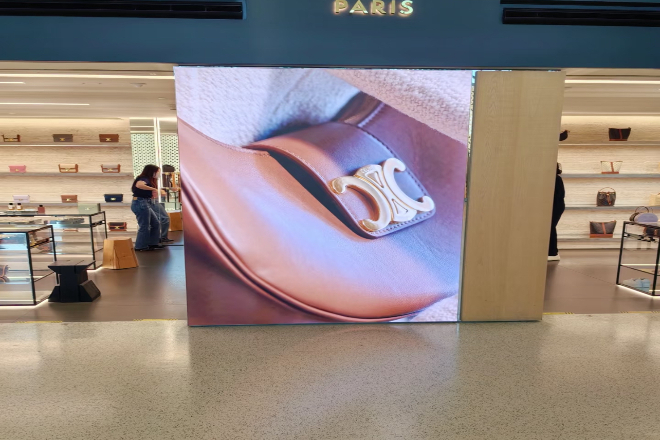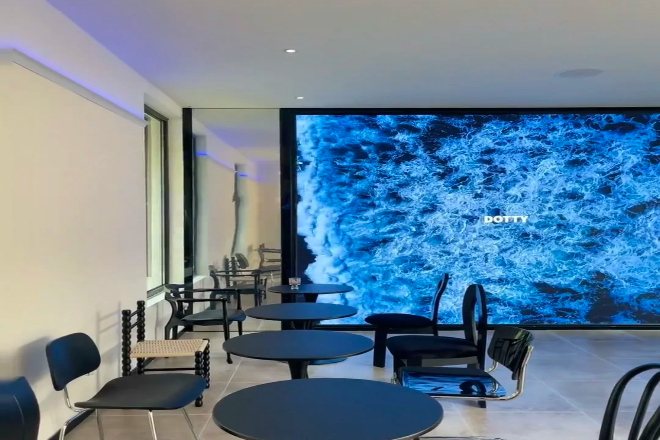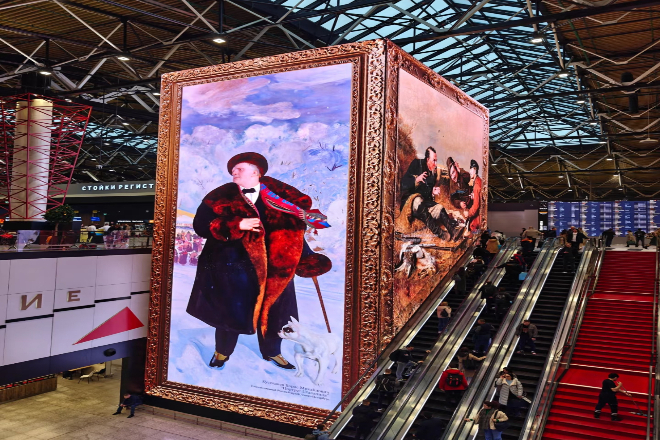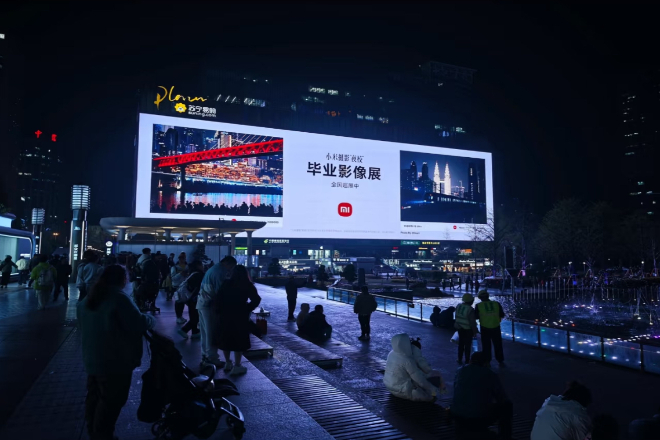Introduction
Although LED display screens are already very common, the issue of “brightness” is actually very particular.
Especially at night, the screen is easy to cause problems if it is too bright or too dark, which not only affects the viewing experience, but also may affect the lives of others and even traffic safety. So how bright should it be at night?
Table of Contents
1. Introduction to the basic concept of LED display screen brightness
The brightness of an LED display screen, in simple terms, is how bright the screen is. This brightness is measured in “nits”.
The higher the nit number, the brighter the screen. It’s like the light of your flashlight, which can be illuminated more clearly if it is brighter.
Indoors, such as ordinary offices or classrooms, the brightness of 300-800 nits is quite appropriate.
This brightness looks very comfortable, and you won’t feel that the screen is too dark to see clearly, nor will it be dazzling because it is too bright.
However, if the display screen is placed outdoors, especially in direct sunlight, it will be different.
The sunlight is very strong, and if the screen is not bright enough, it will be “covered” by the sunlight, and nothing can be seen clearly.
Therefore, the brightness of outdoor display screens should generally reach 3000-8000 nits, or even higher, so that the content on the screen can be clearly seen even in the sun.
Now, many LED display screens can adjust the brightness, which is much more convenient.
Some display screens can automatically adjust according to the ambient light, such as automatically dimming in dark places and automatically brightening in bright places. This not only saves electricity but also makes the screen look more comfortable.
2. What are the factors that affect the brightness of LED display screens at night?

1). Ambient light conditions
Like in a busy commercial street, there are lights everywhere at night, neon lights, and shop signs, and they are very bright.
In such places, if the LED display screen is not bright enough, it will be “covered” by other lights, and everyone can’t see it clearly.
So the screen brightness here has to be higher, about 1500-2000 nits so that it can be conspicuous in a bunch of lights and attract people’s attention.
But if it is placed in a quiet residential area, it will be much quieter at night, and there will be less light.
If the screen is still as bright as on commercial streets, the glare will definitely affect the residents’ rest, and they may even complain about light pollution.
So, in residential areas, the brightness is adjusted to 600-800 nits, which is enough to see the content clearly without being too dazzling.
2). Viewing distance
If you watch it at a close distance, such as in a shopping mall, customers are one or two meters away from the screen, staring at the screen to see the product information.
At this time, if the brightness is too high, the customer’s eyes can’t stand it after watching for a while, and they may feel glare and dizzy. So, the brightness of the screen at a close distance is 600-1000 nits.
But outdoor large-scale advertising screens are different. They are mainly for people far away, such as pedestrians on the road and drivers in cars. The audience may be dozens of meters away from the screen.
If the brightness is not enough, people far away can’t see the advertising content clearly.
So the brightness of outdoor large-scale advertising screens must be high, about 2000-4000 nits, so that people far away can also see the picture clearly.
3). Content type
The content type is also critical. If you only display text, such as the electronic signboard at a bus stop, which only has the arrival time of the bus, then the brightness does not need to be too high.
200-300 nits will be enough. Because the text is mainly for people to quickly understand the information, it does not need to be too bright.
If you display pictures, such as displaying pictures of goods in a shopping mall, the brightness must be higher, about 400-600 nits. Because pictures have colors and details, too low brightness will appear dim, and the details will not be clear.
If you play videos, it is even more particular. The pictures in the video are moving, rich in color, and have many details. If the brightness is not enough, the picture will be blurred and look not smooth.
Therefore, the screen brightness of the video must be 600-1000 nits so that the audience can see clearly and enjoy the video.
4). Use scenario and purpose
If it is a commercial advertisement, such as a large outdoor advertising screen, it is mainly to attract people’s attention and make people notice it among many advertisements.
Therefore, the brightness must be high, about 1000-1500 nits, so that it can be particularly eye-catching at night and attract passers-by.
However, if it is a public information prompt screen, such as the display screen in the subway station, it is mainly to provide passengers with travel information for everyone’s convenience.
This kind of screen has a moderate brightness, about 600-800 nits, which can make people see the information clearly, but not too bright to affect the environment in the subway station.
In short, when choosing the brightness of the LED display screen at night, you have to consider these factors comprehensively so that the screen can be both beautiful and not cause trouble to people.
3. Recommended values of the brightness of LED display screens at night in different scenes

1). Outdoor large LED advertising screen
In a busy commercial area, how bright should those advertising screens be? The recommended brightness is 1500-2000 nits. Why?
Think about it: there are lights everywhere in the commercial area at night. If the advertising screen is not bright enough, it will be like there is no hanging, and it will not attract people at all.
But it can’t be too bright. Otherwise, it will hurt people’s eyes, and it may also affect the lives of surrounding residents and even cause complaints about light pollution.
Therefore, the brightness of 1500-2000 nits can not only make people see the advertisement at a glance but also not make the surrounding environment particularly dazzling.
If the advertising screen is in a quiet place, such as in the suburbs or on the roadside near residential areas, the brightness should not be so high. It is recommended to be 600-800 nits. Why?
Because it is dark in quiet places at night. If the advertising screen is as bright as a small sun, it will definitely affect the rest of the surrounding residents and may make people feel irritated.
The brightness of 600-800 nits is suitable for people far away to see the advertisements clearly without disturbing others.

2). Indoor commercial LED display screens
The brightness of the display screen in the mall should be determined according to the location.
At the entrance of the mall, people come and go and the lights are bright, so the brightness is recommended to be 800-1000 nits.
This allows people to see the information on the screen at a glance, and it can match the bright environment of the mall without appearing abrupt.
If the brightness is too low, it will not be clear in the bright mall and will not play a role in publicity.
Inside the store, the lighting is generally soft, so the brightness of the display screen is recommended to be 600-800 nits. If the brightness is too high, it will be too dazzling compared to the soft lighting in the store.
Customers may not be willing to look at it for a few more times because they feel uncomfortable.
The brightness of 600-800 nits can clearly display product information without destroying the warm atmosphere of the store, which is good.

3). LED display screens in catering places
The brightness of display screens in catering places is recommended to be 500-700 nits. Why?
Because the lighting in restaurants and cafes is generally soft, creating a warm and comfortable atmosphere.
If the brightness of the display screen is too high, it will appear particularly abrupt, destroying this atmosphere and making people feel uncomfortable.
The brightness of 500-700 nits can clearly display the menu or the characteristics of the store without making people feel dazzled, which is quite suitable for such places.

4). Public information LED display screens
The brightness of display screens in transportation hubs such as subway stations and bus stations is recommended to be 600-800 nits. Why?
Because these places have a large flow of people, the ambient light is relatively complex, with both lights in the station and natural light. If the brightness is too low, passengers cannot see the information on it clearly, which can easily delay things.
But if the brightness is too high, passengers will also feel tired, especially when waiting for a long time. The brightness of 600-800 nits allows people to see the information clearly without being dazzling, which is quite suitable.
4. The impact of too-bright or too dark LED displays on vision

1). The harm of too-bright LED displays
1.1). Eye fatigue and dryness
Imagine that you stare at a very bright screen, and your eyes will unconsciously squint. This is because your eyes are trying to reduce the light. Over time, your eyes will be very tired, just like staring at the sun all the time.
Moreover, if the LED screen is too bright, the moisture on the surface of the eyes will evaporate very quickly, and the eyes will become dry, stinging, and even tearful.
For example, in the office, if the computer screen is too bright, the eyes will definitely not be able to bear it if you look at it for several hours in a row.
1.2). Vision problems
Staring at an overly bright LED screen for a long time will make your eyes more and more tired. Especially for children and teenagers, it is easy to cause myopia to deepen.
Because the eyes will constantly adjust the focal length in order to see the screen clearly, over time, the shape of the eyeball may change, and myopia will become more and more serious.
More seriously, too bright light may damage the retina, just like the photosensitive element of a camera is overexposed.
Over time, vision may be permanently reduced, and even serious eye diseases such as macular degeneration may occur.
1.3). Interference with the surrounding environment and traffic
An overly bright LED screen is not only bad for the eyes but also interferes with the surrounding environment.
For example, in the city, an overly bright LED advertising screen may shine into the windows of residents and affect their sleep.
For drivers, an overly bright screen may dazzle the eyes, making it difficult to see the road clearly, increasing the risk of traffic accidents.
For example, at an intersection, an overly bright advertising screen may make it difficult for drivers to see the traffic lights clearly, which is too dangerous.
2). Problems with too-dark display screens
2.1). Information cannot be seen clearly
If the LED screen is too dark, the information on it will be difficult to see clearly.
For example, in a shopping mall, if the advertising screen is too dark, customers may not notice the product information on it at all, and the advertising will be in vain.
At the bus station, if the display is too dark, passengers may not be able to see the train information clearly and may miss the bus.
2.2). Safety hazards
In some special cases, a LED screen that is too dark may cause serious problems. For example, at a subway station, if the display is too dark, passengers may not be able to see the evacuation information in an emergency, delaying the escape time.
In a hospital, if the display is too dark, doctors and nurses may not be able to see important information, affecting treatment and even endangering the patient’s life.
5. Conclusion
In short, how bright the LED display screen is at night is really not a matter of just adjusting it.
Reasonable settings based on the scene, flow of people, content, and distance can not only make people watch comfortably but also avoid unnecessary trouble. Just the right brightness is the real mastery.
Finally, if you want to know more about this aspect, please get in touch with us.
